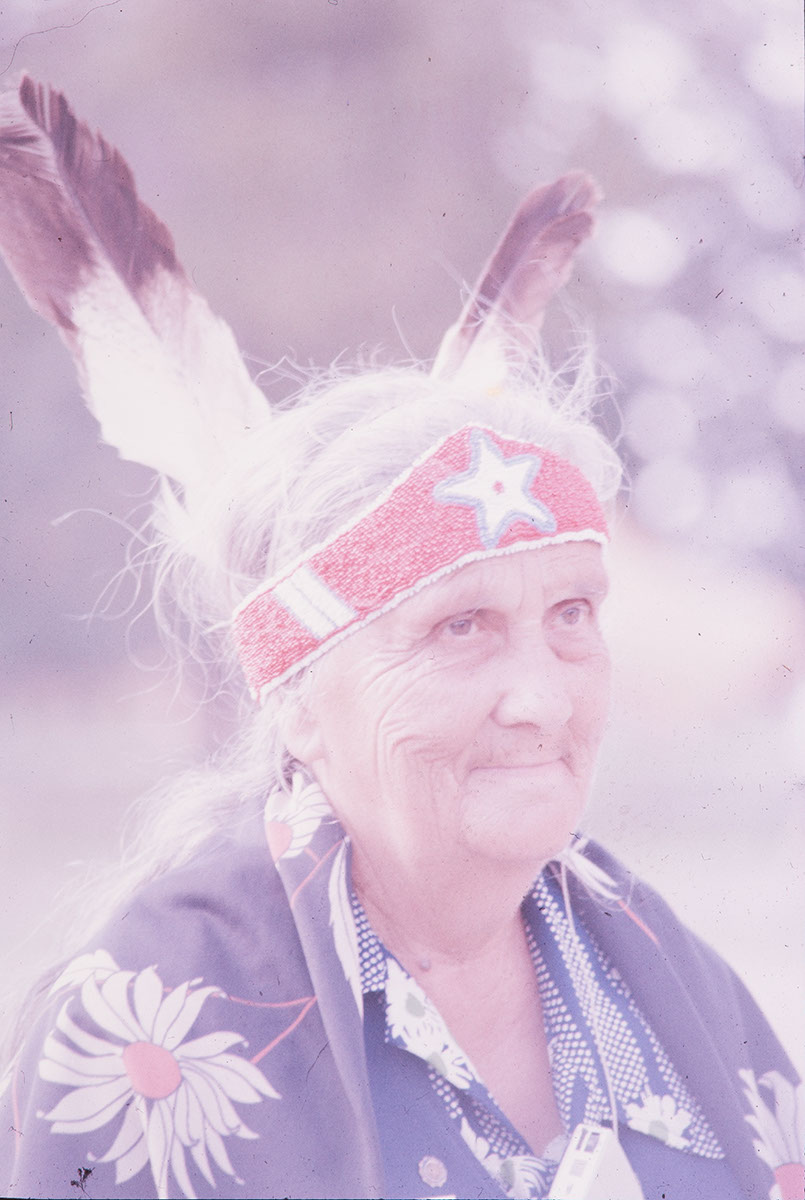The continuing traditions of the original inhabitants of this nation were presented in the Native Americans area by representatives of the more than 200 Native American communities throughout the United States. Working with the Smithsonian, they had examined their traditions and created the programs, speaking to their way of life today and their hopes for the future.
The Native Americans area was designed with Native traditions in mind. The entire area lay within a circle that represented the wholeness of life, emphasizing that, in Native philosophy, everything is interrelated. A corn field formed the outlying circle; corn, the contribution of Native Americans to the peoples of the world, is regarded as the gift of Mother Earth. With squash and beans sharing the field, the entire area was thus surrounded by the three staple foods of the Southwest, the "three sisters" of the Iroquois. The Learning Center, designed by architect Dennis Sun Rhodes, Arapaho, faces East, the direction of sunrise and of life, and visitors were intended to proceed inside sunwise, in a circle. In its design and in its presentations of music, crafts, dance, and discussion, the Native Americans area honored the first Americans.
Building upon six years of programming during preceding Festivals, the Bicentennial presentations presented a region-by-region overview of American Indian folklife:
June 16-20, Northeast (Six Nations, Iroquois, Mohawk, Seneca, Onandaga, Tuscarora, Algonkian, Passamaquoddy, Penobscot, Shinnecock, Hassanamisco, Nanticoke, Susquehanna, Wampanoag, Narragansett, Gay Head, Mohegan, Schaghticoke)
June 23-27, Great Lakes (Oneida, Ojibwa
July 1-5, Southeast (Cherokee, Chickasaw, Choctaw, Creek, Seminole, Tuscarora, Muskogee, Tunica- Biloxi of Louisiana, Mattaponi, Houma Tribe of Louisiana, Alabama Creek, Lumbee)
July 7-11, Southern Plains (Comanche, Kiowa, Kiowa Apache, Omaha, Pawnee, Ponca, Southern Cheyenne)
July 14-18, Prairie (Sac and Fox)
July 21-25, Northern Plains (Northern Cheyenne)
July 28-August 1, Northwest Coast (Alaska Federation of Natives, Confederated Tribes of Siletz, Confederated Tribes of the Warm Springs Indian Reservation)
August 4-8, Southwest (San Juan Pueblo, Navaho, White Mountain Apache, Comanche)
August 11-15, Plateau (Confederated Tribes of the Umatilla Indian Reservation, Confederated Tribes and Bands of the Yakima Indian Nation, Ute, Klamath)
August 18-22, Basin (Northern Paiute, Southern Paiute, Washo, Western Shoshone, Walker River Paiute)
August 25-29, Northern California (Miwok, Wintun, Pomo, Yurok, Karok, Tolowa, Hupa, Klamath, Tchinook, Confederated Tribes of the Umatilla, Quileute)
September 2-6, Arctic (Alaska Federation of Natives)
Lucille Dawson served as program coordinator, assisted by Thomas Kavanagh. The multi-year program was shaped by the Native Americans Advisory Group, including Louis Bruce, Rayna Green, Dell Hymes, Clydia Nahwooksy, Alfonso Ortiz, and William Sturtevant.


